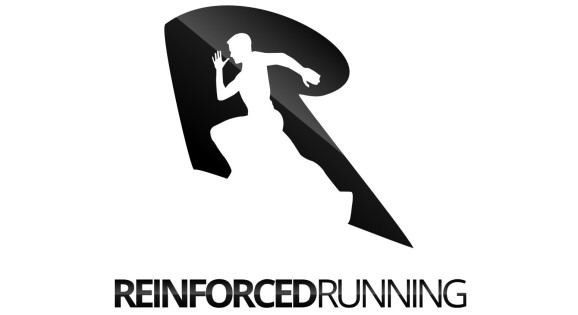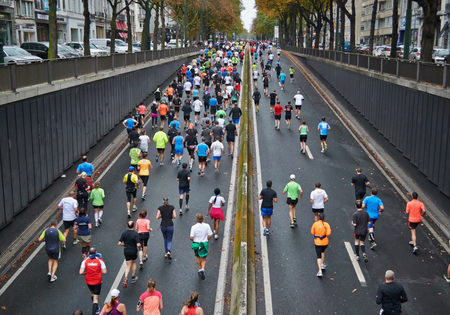Learn pace to reduce injuries, improve progress, and race fast.
True or False: During a race the faster, the better.
So, the best way to get fast is to run fast, right?
You are super smart if you said “true”!
But, runners want to push the limits ever freaking run.
Jess is a runner with great talent. She ran in college and now race on the roads. She is a multiple time Boston Qualifier and she pushes her body every run.
Her logic was: “Why wouldn’t I run as fast as possible during my workouts? I get them done!”.
Fast runs and speed training have there time and place, but if you run hard every day you will risk:
- Burnout
- Injury
- A False Confidence
Jess ran herself into her share of injuries. Amongst her success, she had several injuries and disappointing race days. She runs too hard during practice and it left her vulnerable on race day. She did not know her attainable race pace, she would “go out” too hard in the early miles, and was hampered by aches and pains.
What Jess would later find is the secret to racing well is running easy and finding her pace.
This article will teach you how to run with control and how learning pace will:
- Create body awareness
- Help you reach your goals
- Build sustainable progression
How To Learn Your Body
The difference between a “correct” pace and a “too fast” pace is slight but critical. It’s the difference between a “PR” or a bust.
If you do not practice pace work you will learn your ideal race pace.
Workouts to learn your pace
I know, fartlek, hilarious! As a former high school coach and an immature person, I have had my fair share of chuckles from this workout.
But, the interval based workouts are a great way to recognize your pace.
Fartlek translates into “speed play.” Your speed and duration will change each rep. Feel free to be creative. But, I have found it is best to keep it simple.
Try the following “Fartlek” Workout:
10-minute warmup at “normal” pace
5 mins @ Half marathon pace
1-2 min “normal” jog between sets
Again, the sets and reps don’t need to be linear. Hit several different paces and durations.
- After your “base” phase as a way to introduce speed work.
- Final four to six weeks leading up to a race to familiarize yourself with your goal pace.
A baseline test is a way to determine your current fitness. Learning your fitness will reveal an “ideal” pace for training and race day.
A “baseline test” is a race simulation at near max effort. This could be a race or an unofficial time trial.
Your baseline test can be any distance, but 5k – 5 mile is ideal for a few reasons:
- The race is long enough that it will help you adjust pace.
- Short enough to keep recovery quick.
Run your baseline test every 3-4 weeks and reevaluate your training pace. Use a training calculator like Runsmart.com as a guide.
The bottom line is most runner’s don’t run their pace because they don’t know it. So, find out!
Hit Your Workout Goal and Improve
Every workout has a purpose.
Runners toss their training plans aside when they felt good and run too hard. A program with progressions will systematically make workouts more difficult.
When you stick to progressions, you will adapt to the training. It’s a way to get faster without killing yourself each workout. So, do the workouts as planned.
An endurance workout should feel comfortable. If increase the speed and pace, you will move out your intended training zone. Training too fast will lead to burnout and inconsistent results.
Build sustainable progression a race fast.
Running an interval too fast will lead to inconsistency. Every target pace has a purpose. During a workout, it feels good to “kick” it home. But, one rep will not make you faster. You have limited “max effort” reserved for race day. Do not waste them in practice.
When you to push the pace, you need more time to recover. The repeatability of a workout is where the magic happens, so stay on pace and recovery to be consistent!
This would happen to Jess.
She would train outside of her “growth zone” and would be inconsistent. When she started to run her workouts with regularity she created predictable results.
She went on to run a 5k and 10k PR in route to a monster effort in a 10-mile race! She bought into a plan and dominated her race.
Avoid running injuries and continue to improve.
You rarely get hurt from a single workout. Lack of recovery puts you in danger. If you run too fast during your intervals, you will need more days to recover. You may not realize how much a workout costs you until its too late. Running
You will reach your goals through consistent effort. Stay on pace to limit your recovery time.
False confidence will crush you.
Without proper pacing, you will have a skewed belief in your ability. Ultimately you are training for race day. But, when you run too fast in practice, you are the setting yourself up for disappointment. Then, you’ll look back and blame the training plan, when you were over your head during your workouts.
So slow the F down! Learn your pace. And smash goals
You will get faster, you just need to stick to the plan and build!





